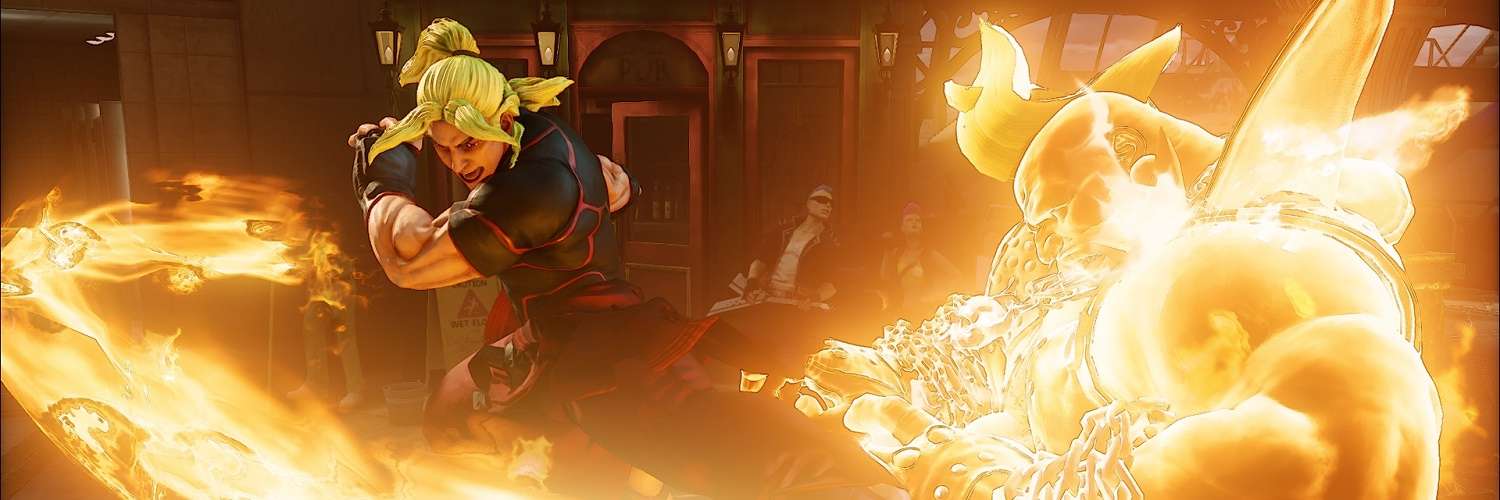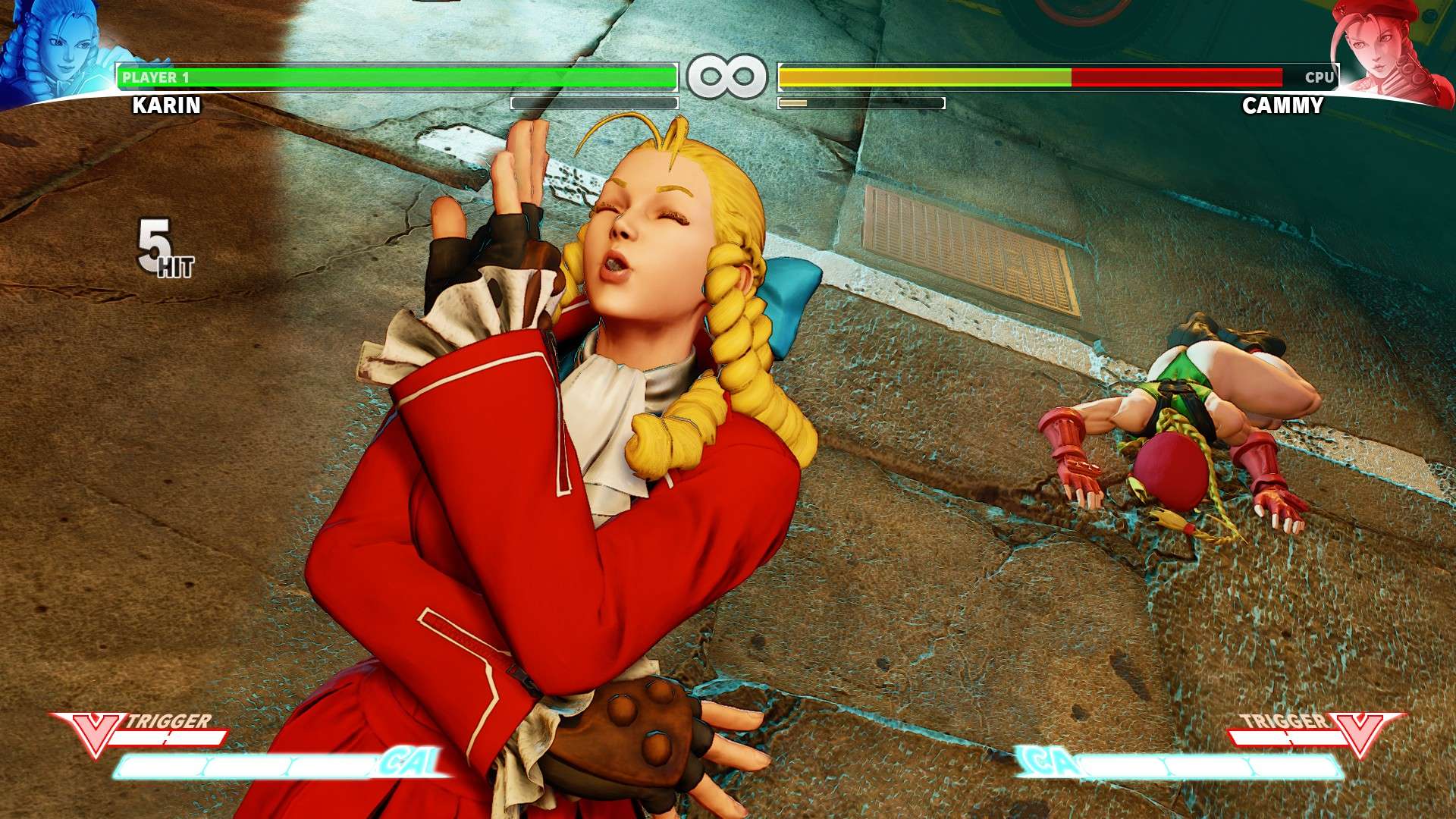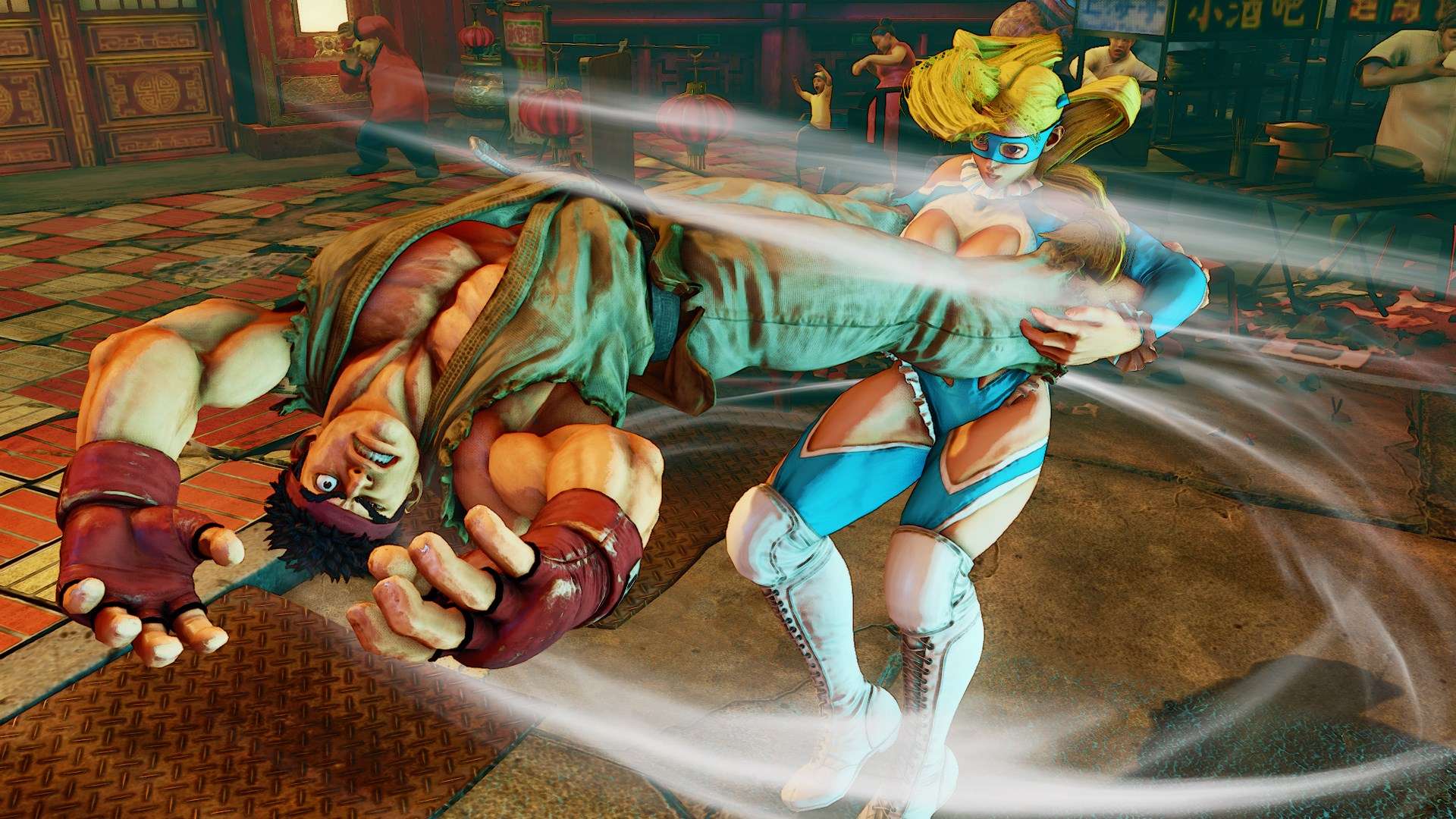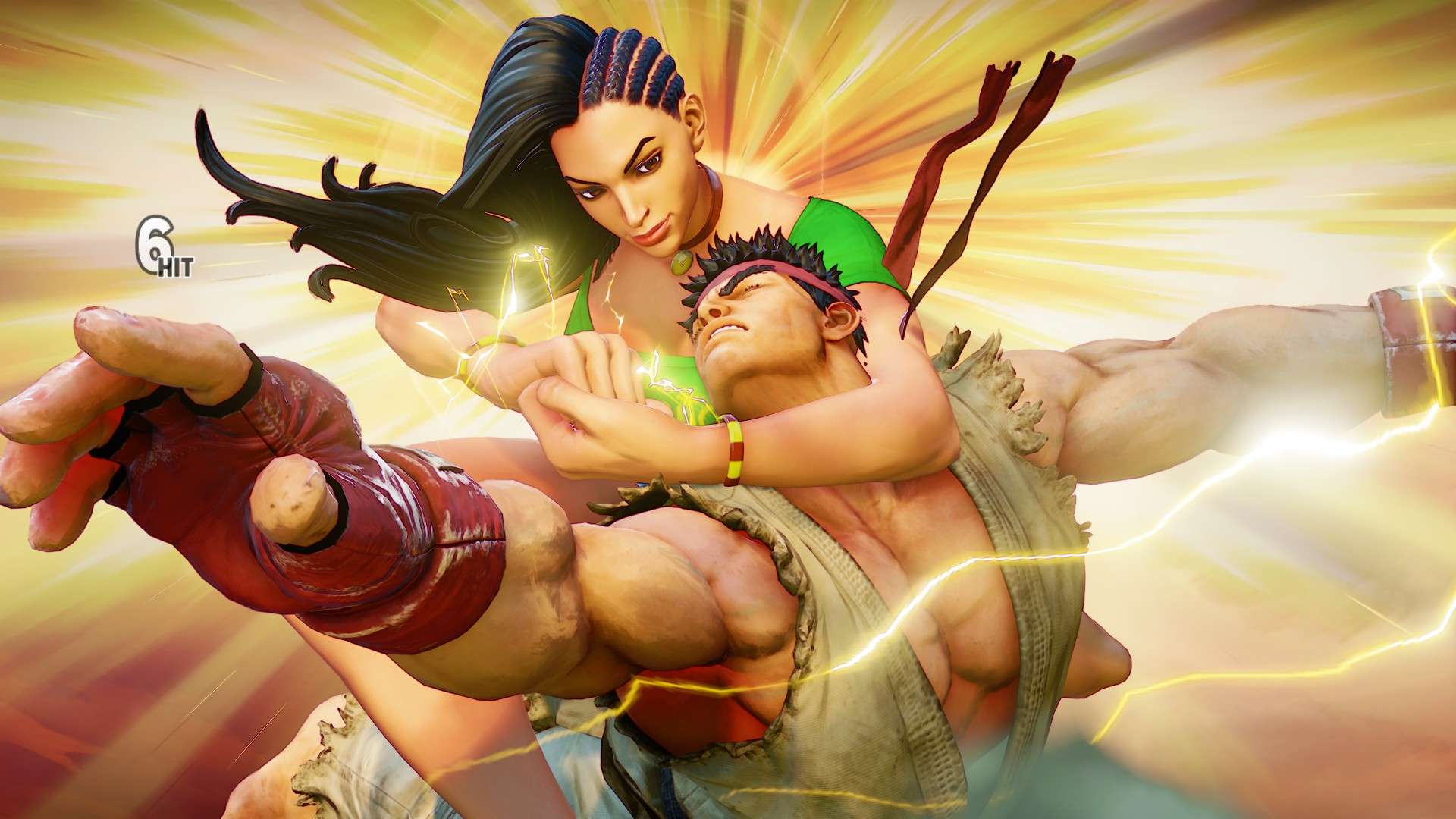
Street Fighter V PC Review
Street Fighter is an important part of video game history. While we can chuckle about the issues with the original Street Fighter from 1987, there is nothing you can say to take away the impact that Street Fighter II had when it arrived in arcades in 1992. Capcom had given birth to the rise of the fighting game genre, so much so that everyone wanted a slice of it in the early 90s. Street Fighter IV, while not quite having the same impact, was still a rebirth for the genre, sprouting new life for fighting games that sparked the growth of the Fighting Game Community, with more and more people playing fighting games and wanting to enter tournaments to see if they could have the prowess to defeat Sheng Long. It also allowed other companies to take a stab at bringing fighting games out of cryostasis to bring variety to what was looking like a genre owned by Street Fighter IV.
After seven years of Street Fighter IV and its many updates, Capcom has decided that it is time to move on with the release of Street Fighter V, a game that refreshes the series with another great entry. Street Fighter V changes the overlaying mechanics that sit on top of Street Fighter‘s fundamentals to offer a game that strips some of the deep complexity that was in Street Fighter IV, but still offers excitement that keeps the heart of Street Fighter intact.
It is this step back that makes Street Fighter V feel like the Street Fighter of the 90s, the one where ridiculous links and combos were not the stars, an era where playing footsies with your opponent, poking them for an opening, piling on the pressure before getting in a short damaging combo, was the true way to win. It’s about learning the match ups against other characters and getting good at the core basic level of street fighting. This is what Street Fighter V has mastered. No longer asking the player to expert ridiculous combos that require one 60th of a second to connect, no longer having to focus attack, no longer spending metre to cancel moves to either extend combos or cancel moves to get back to a safe position – all those overcomplicated mechanics are stripped-down and replaced with a much easier to understand V-system that is split into three mechanics.
After experiencing a roaster of over 50 characters in Ultra Street Fighter IV, the small selection of 16 fighters might seem a little shallow at its launch, but each cast in Street Fighter V have their traits that make each of the 16 unique. Returning favourites include the franchise’s most well known characters, such as Ryu and Ken – who now have been tweaked to separate the duo’s Ansatsuken fighting style – Chun-Li, M. Bison, Cammy, Vega and Dhalsim. In the list of returns, I feel all have been tweaked enough to offer something new that requires relearning, especially Vega, where his move set has changed from charge motions (hold back for two seconds, then forward and a button) to direct input commands that characters like Ryu use to throw out fireballs. We also have characters coming from the Street Fighter Alpha series who missed the fun of Street Fighter IV. The likes of the once dead Nash, along with the powerhouse Birdie, the wrestling R. Mika, and my own personal favourite, the wonderful laughing Karin. It’s great seeing these characters updated for a new-era, as with only their Alpha variations to go on before, this transition into 3D is a first for them, and they have been brought across fantastically to Street Fighter V.
As for the four newcomers? I find them to be a rather solid additions. FANG is the most interesting of the bunch, simply because he brings an unorthodox stance and the ability to deal damage over time with his poison infused attacks. Rashid has the power of wind at his side, being a highly mobile character with a tricky move set. Laura, who happens to be the older sister of Sean from Street Fighter III: Third Strike, comes with the skill of Brazilian jiu-jitsu, throwing in MMA skills for grappler action, but she also is armed with electric-fused skills, such as a short travelling fireball. The last entrant, Necalli, is an ancient warrior who is feral, he just wants to completely demolish his opponent with aggressive brawling techniques and slamming your face into the ground. I feel that Street Fighter V‘s new bunch is a better selection than what arrived in the original Street Fighter IV arcade release (C. Viper, Abel, Rufus and El Fuerte), bringing a wide net of diverse fighters that doesn’t feature an annoying Mexican chef… screw El Fuerte!
Capcom didn’t stop with having a wide range of different fighting styles, they injected the V (variable) system into these characters to build on their distinct flavour. Replacing the focus attack is the V-Skill, and it uses the same button combination of pressing medium punch and medium kick together to activate. V-Skills are specialised moves that are free to use; they don’t require the use of any metre to trigger, and each one is completely different, making the player have to figure out the best way to use them with their chosen character. Ryu’s Mind’s Eye V-Skill is basically a simple version of the parry system in Street Fighter III: Third Strike, M. Bison’s Psycho Reflect absorbs fireballs, giving the option to reflect back if desired, while Dhalsim can Yoga Float with some hang-time for a few seconds before dropping down to the ground. The only V-Skill that seems somewhat of a dud is Cammy’s, as this is one of her original special moves converted into a V-Skill to spin knuckle past fireballs.
V-Skills play a key role into building up V-Trigger, the bar that houses the ability to make use of the last two variable options. V-Trigger has a greater impact on the character who activates it, and just like V-Skills, what it does is dependant on the character. Zangief’s cyclone lariat causes him to turn red and spin on the spot to suck in opponents for multiple hits. Ken powers up with fire to increase the range and number of hits from his special attacks, while Rashid throws out a whirlwind. Casting a V-Trigger fully dispenses the metre, apart from Necalli, who goes into full Super Saiyan form with bright, flowing hair and improved damage that keeps his V-Metre full until the round ends. Lastly, V-Reversals can be used to push an opponent off you when blocking, but at the cost of a chunk of the V-Metre. The Variable system is a simpler to understand mechanic than the focus system and its cancelling, and while it might sound a little overwhelming when thrown to you in an information dump in a review, let it be known that these are easy to learn and perform in battles.
And that is really the core concept for Street Fighter V. The game wants to make it easier for newcomers to learn and have fun. Combos are easier to perform, due to less strict execution timing. This doesn’t mean the game is suddenly a walk in a park; the tournament players are still going to have their exciting matches, because Street Fighter V wants to take the focus off the complexity, off actual memorisation of combos, and instead study what your character can do against the rest of the gang, and when each character feels they can hold their own against each other, it really comes down to who is best at street fighting. In Street Fighter V, you lose not because some guy can perform some crazy 16 hit combo that extends from expanding a full bar of super metre that used to happen often in Ultra Street Fighter IV. More often than not, you lost because the other person was better at studying your habits and hitting you. I still have love for Street Fighter IV (and will do, since my main Makoto isn’t in Street Fighter V), but the principles of Street Fighter are purer and clearer to see in Street Fighter V.
Taking a step back from the excellent gameplay, it’s not all brilliance when it comes to Street Fighter V‘s content and current state of launch. Content wise, this game is clearly aiming for a multiplayer approach, as single player content is extremely limited. You have a prologue story mode, which is virtually three fights per character against some quick artwork stills with voice work. The true story mode is coming in June as a free update, and is rumoured to last between one-to-two hours. Not exactly Mortal Kombat X or BlazBlue length, but given that only one round fights happen in story mode, it might offer a rewarding experience, but really, only time will tell for that. Survival is the other single player mode, where four difficulties of easy, normal, hard and hell, make up the challenge of eventually taking down 100 combatants. Survival is also only one round fights, and this is what is incredibly surprising about the release of Street Fighter V – it actually does not feature a mode where you can play standard best of three rounds against the AI. There is no Arcade mode, and while I will be playing Street Fighter V for the multiplayer, both locally and online, Arcade mode was an area I used to test around with characters I was learning to play. In its current state, I have to use training mode against AI to do this.
A look at the main menu is a clear sign that Street Fighter V is an ever growing product. Challenge mode and Store is blocked out, leaving a message on a screen that these are coming in the March update. Challenge mode will bring Trials and Battle Tips, basically advance tutorials and combo tests for all characters, while Target will be daily goals, and Extra-Battle will be specialised boss fights , which I’m guessing is going to be characters that have modifications to them – more health, infinite metre, etc. Capcom has stated that they want this to be the only version of the game you need. No more Super edition, no more Ultra edition, just this one disc and a supply of free and purchasable downloadable content for the remaining life of the game, which one can assume is going to be the lifespan of the PlayStation 4. Six characters have already been announced for 2016, and can either be bought through a season pass, or if you the play the game a ton, through the use of fight money, in-game currency earned for beating the modes or winning online. This is a similar design to free-to-play games, such as Heroes of the Storm or Smite. It’s a good idea, as people who take a break can still return to the game without having to put down another £30 to get the next version to be able to return to the heat of battle, while also been given the chance to pick and select what characters they want included as a selectable option.
Of course, people are going to be vocal about such a design. “This is Early Access, why are you selling it as a full game?” This will be shouted to no end, and I get where they are coming from, but the reality is, you can simply wait until June when the content is there and buy the game then. There is no one forcing you to buy it now. For me, I am straight in there, and I’m sure fans of Street Fighter who play a lot of multiplayer are feeling the same. Given the chance, I bet 90% of them would pick the game early, because their focus is multiplayer. It’s different strokes for different folks here, and that is fine, but I won’t handicap the game for what looks like a delivery of content is coming in the future.
What I will rain hell on is the server issues. Starting with the good first. When this game works, its a joy, a bliss playing against other people. The netcode is excellent, if you are playing with someone within an acceptable distance. Street Fighter V uses rollback netcode, which means it calculates what the correct outcome was at a given time, even if you have already seen what appeared on screen, the game will roll it back and show the proper result after calculating the lag discrepancy. This makes it simply unplayable when high ping is involved. In terms of its job, it’s probably the best netcode to have, as it makes the fights fair without delayed input destroying the result, but it comes at a cost that makes it impossible to play long distances.
The issue with the servers has been unacceptable, especially after having four beta tests, which where suppose to be used to stop this issue. Earning fight money requires being logged in, but disconnections have been happening often. You could be on fight 48 of survival mode, but if that server cracks under the pressure, you are kicked back to the main menu with all progress lost – it’s simply a bad design. Right now, as of this published review date, the servers are still causing problems with Battle Lounge – the lobby system that currently supports two players, with an update in March to make it up to eight. I have been trying to connect to a friend all week and the issues with Battle Lounge are making this impossible to achieve. Ranked and Casual matches have also had issues with finding opponents, sometimes taking up to five minutes to find someone. This has been getting better as time goes on, so hopefully, next week should be a much better experience for everyone. Luckily, the game lets you do other modes while searching for opponents.
Launch troubles and lack of single player aside (which this score addresses), Street Fighter V is a brilliant fighting game. While currently in its infant stage, Street Fighter V will continue to grow into something amazing. Right now, its core gameplay is awesome. The fighting is some of the best out there, and it never feels like the design to take away the complexity has hurt the fantastic experience that a fight in Street Fighter V offers. While content is low and server issues have caused trouble – Capcom will eventually sort server problems out soon – erecting a black cloud over what should be an exciting launch, there is no denying that if Street Fighter IV is anything to go by, this game will become packed with a huge selection of fighters and content that should last for many years. If you are unhappy about the content, just wait it out, but for fighting fans, Street Fighter V begins a new era for the franchise, one that has excelled at finding a good balance for every type of fighting player – new or experienced – and is a game that can only get more exhilarating as time moves forward and the game grows.






